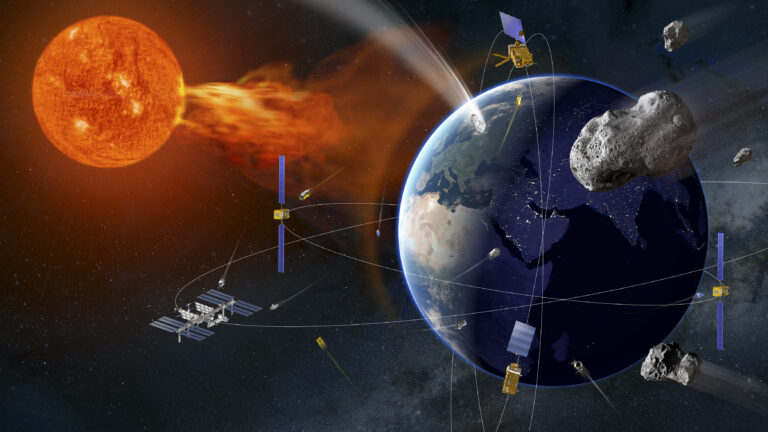A weather satellite belonging to the European Space Agency (ESA) was forced into a last-minute maneuver to avoid colliding with another satellite in a large constellation, in a first for the agency.
The ESA performed what it called a “collision avoidance maneuver”, firing the thrusters of its Aelous observation satellite to move it off a course from a potential direct hit with a SpaceX satellite in the Starlink constellation.
The agency said it was first notified of the threat in late August by the 18th Space Control Squadron of the US Air Force, which monitors objects traveling in Earth’s orbit.
The US data predicted a “conjunction” on September 2 between Aelous, which was launched 12 months ago to monitor wind speeds on Earth, and the recently launched Starlink44, part of SpaceX’s mega constellation, which is planned to grow to a 12,000 strong fleet by mid-2020.
According to the ESA, staff in its Space Debris office monitored the situation for several days and as the collision probability grew they contacted SpaceX to discuss what could be done.
After SpaceX informed the ESA it had no plan to take action, the ESA decided to fire the thrusters on its satellite half an orbit before the potential collision. Commands were sent to the spacecraft from ESA mission control in Germany and it was maneuvered to a position 350m above its previous orbit, comfortably out of reach of Starlink44.
“This example shows that in the absence of traffic rules and communication protocols, collision avoidance depends entirely on the pragmatism of the operators involved,” said Holger Krag, head of space safety at the ESA. “Today this negotiation is done through exchanging emails – an archaic process that is no longer viable as increasing numbers of satellites in space mean more space traffic.”
According to the ESA there are about 9,000 satellites in orbit, with only about 2,000 operational. The other 7,000 are inactive and orbiting as space debris. Consequently 90% of ESA’s avoidance maneuvers until now have been as a result of space debris.
The Aeolus incident was the first near miss for the agency involving a satellite from a mass constellation. But as commercial space ventures like SpaceX populate Earth’s orbit with more satellites, the need for a more comprehensive avoidance system increases as the risk of collision grows.
With this in mind, the ESA is planning to replace its current manual processes with a fully automated system that will leverage artificial intelligence to protect the agency’s assets.
“No one was at fault here, but this example does show the urgent need for proper space traffic management, with clear communication protocols and more automation,” says Holger. “This is how air traffic control has worked for many decades, and now space operators need to get together to define automated maneuver coordination.”



